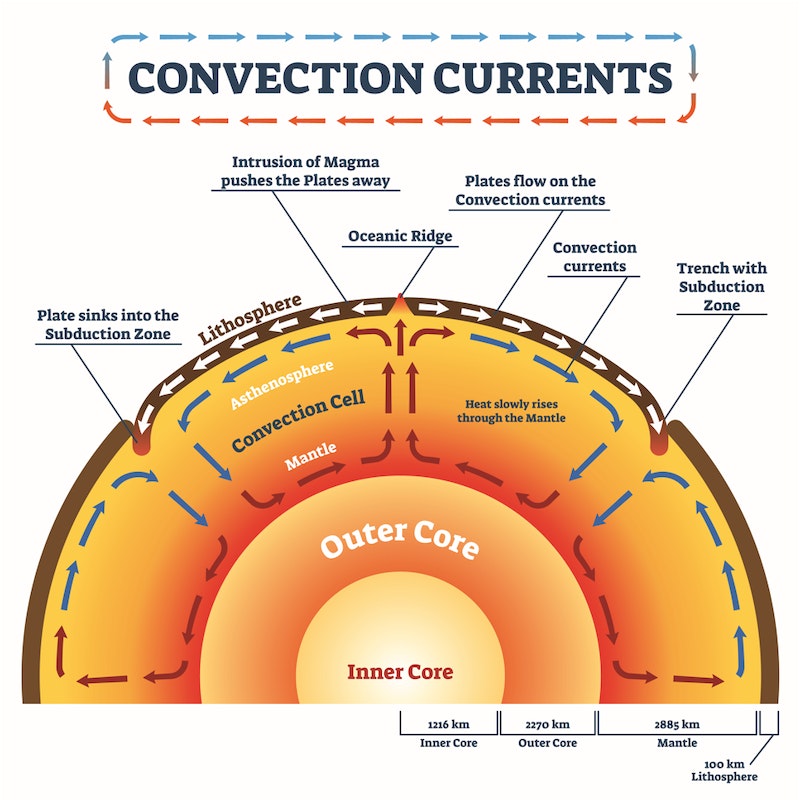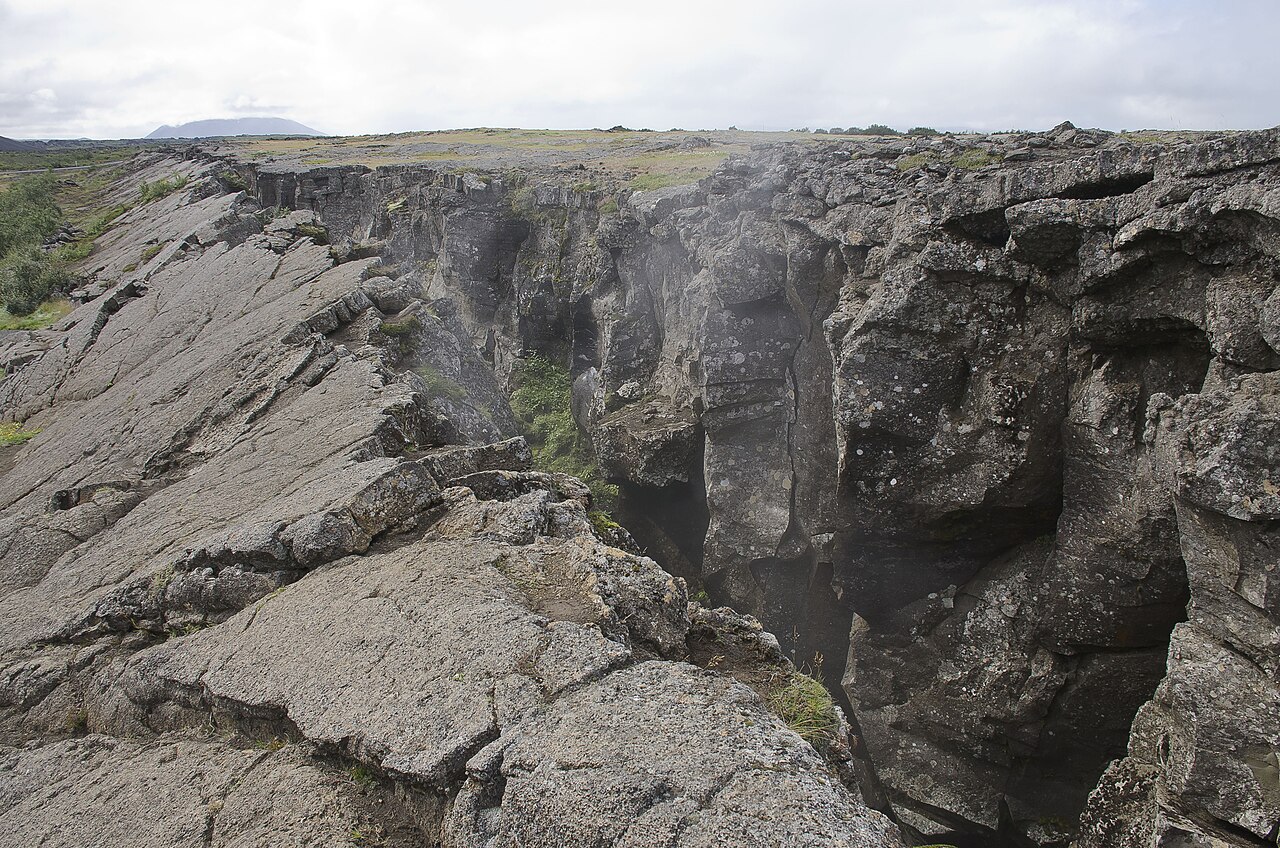The Earth’s outer shell is divided into distinct and rigid sections known as lithospheric plates. These plates have the ability to move across the asthenosphere, potentially breaking apart, moving apart, or coming together. This geological process, identified as plate tectonics, presents a well-known story. Nevertheless, the complex mechanism driving this immense spectacle is far from simple.
Every lithospheric plate undergoes a gradual and unceasing shift on the Earth’s surface. Their velocities exhibit a range, from the unhurried few millimeters per annum characterizing the slowest ones (namely Antarctica, Eurasia, and Africa) to the more rapid 10 centimeters per year exhibited by the Pacific, Nazca, and Australia plates. The genesis of these movements is intricate, necessitating an exploration into the inner realms of our planet. Although convection currents within the mantle are frequently cited, the propulsive impetus behind plate tectonics encompasses a fusion of mechanisms that encompass the entirety of Earth’s dynamics.
The Importance of Decoupling Between Lithosphere and Asthenosphere

To begin, it’s crucial to highlight that the motion of lithospheric plates is feasible exclusively due to the presence of a separation between the external shell, which is the lithosphere, and the more profound strata beneath. The lithosphere effectively glides over the asthenosphere at a boundary recognized as the LVZ (Low Velocity Zone), positioned at roughly 100 kilometers in depth. The rheological characteristics of the lithosphere permit distinct movement between these two tiers. Were the lithosphere and asthenosphere tightly connected, the phenomenon of plate tectonics would be utterly implausible.
A compelling manifestation of this detachment can be observed in the existence of chains of volcanic archipelagos linked to a thermal anomaly (like the Canaries, Hawaii, etc.). The arrangement of these islands vividly showcases the disconnection between the lithosphere and asthenosphere, as the profound magmatic activity of the thermal anomaly does not exert any influence on the displacement of the overlying tectonic plate.
Conversely, it is understood that the motive power propelling plate tectonics originates from the depths of the mantle. If a pronounced disconnection were to occur between the lithosphere and the asthenosphere, it would effectively obstruct any form of engagement between these distinct strata. Consequently, the mechanisms influencing the asthenosphere would wield no sway over the lithosphere. This scenario leads to the supposition that the familiar phenomenon of plate tectonics might not come into existence. As such, pivotal regions emerge where the interplay between these layers becomes noteworthy, ultimately steering the motion of tectonic plates. These crucial zones manifest along mid-ocean ridges and within subduction trenches.
Without Energy, There Is No Engine
To comprehend the workings of plate tectonics, one must initially fathom the source from which its operational energy emanates. After all, just as an engine requires fuel, so does this phenomenon. The radioactive elements present in the Earth’s crustal rocks yield the internal heat essential for propelling the motion of tectonic plates. This ongoing heat generation is partially diffused through thermal conductivity. Yet, this in itself is insufficient. The surplus internal heat consequently induces convective motions within the mantle, propelling heated rocks towards the Earth’s surface. This process facilitates effective dissipation of heat while also giving rise to an uneven temperature distribution and, consequently, disparities in density. These density variations are especially pronounced at the boundary between the lithosphere, where the majority of the heat is released, and the asthenosphere. The frigid, rigid, and dense lithosphere overlies a warmer, pliable, and lighter stratum, easily subject to deformation. These divergences instigate the mechanical forces accountable for instigating plate movement.
Push and Pull

Mid-ocean ridges function as areas where the Earth’s internal heat is efficiently released. The dynamic rise of the heated and relatively less dense asthenosphere pushes the lithosphere apart on both sides. This occurrence of seafloor expansion can be perceived as a dynamic that propels the tectonic plates apart. Nevertheless, this process does not exclusively propel plate tectonics. An alternative influence stems from the gravitational instability resultant from the cooling of the oceanic lithosphere. In actuality, as the oceanic lithosphere ages, it grows colder and denser. Once it surpasses the density of the underlying asthenosphere, it commences descending. This event, which triggers the inception of a subduction zone, gives rise to a traction force. Consequently, the descending lithosphere draws the remaining portion of the lithospheric plate alongside it.
Consequently, slab pull at subduction trenches and ridge push along mid-ocean ridges are the two surface mechanisms that drive plate tectonics. The heat produced by the decay of radioactive elements inside the Earth’s interior fuels the underlying and more powerful driving force of mantle convection, which in turn drives these mechanisms.
References
- Featured Image: Wikimedia.
